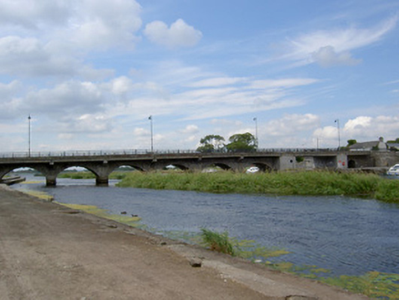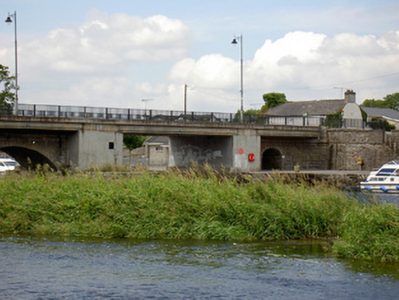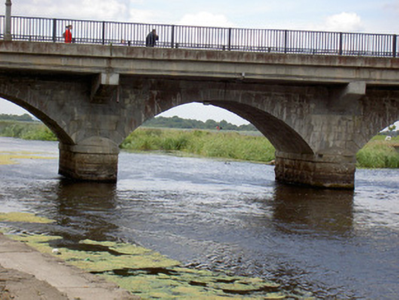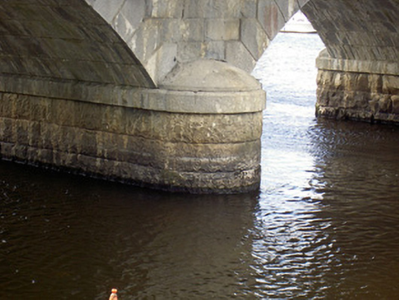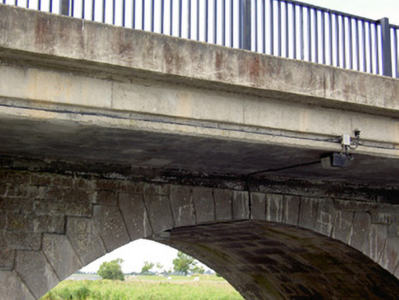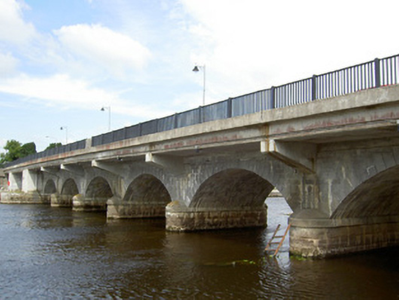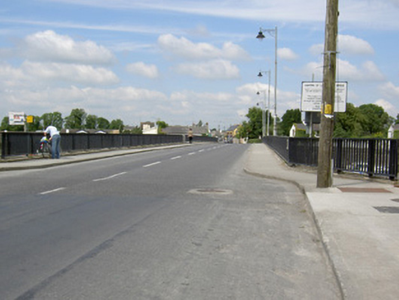Survey Data
Reg No
13310001
Rating
Regional
Categories of Special Interest
Architectural, Technical
Original Use
Bridge
In Use As
Bridge
Date
1835 - 1845
Coordinates
200548, 269364
Date Recorded
28/07/2005
Date Updated
--/--/--
Description
Six-arch road bridge over River Shannon, built c. 1835 – 1843. Original metal swivel section to the northwest end replaced c. 1975 by fixed concrete span with concrete piers. Original parapets removed and road/footpaths widened with cantilevered reinforced concrete sections/decks to either side c. 1993. Original round-headed pedestrian arch and walkway built into squared limestone rubble abutment to the west end. Constructed of ashlar limestone with segmental arches having ashlar limestone voussoirs. Rusticated/rock-faced limestone piers with rounded/U-shaped cutwaters to upstream and downstream elevations. Located to the northwest end of Lanesborough, linking County Longford with County Roscommon. Spans border between Leinster and Connaught.
Appraisal
Despite recent alterations, this fine bridge represents a significant mid-nineteenth century engineering achievement and is an important element of the built heritage of Longford. It is well built using high quality ashlar limestone masonry, while the graceful profile of the arches identifies the civil engineering heritage significance of the site. The rounded/U-shaped cutwaters are typical of the many bridges built across the River Shannon by the Shannon Navigation Commissioners during the mid-nineteenth century. It was probably built to designs by Thomas Rhodes (1789 – 1868), the chief engineer with the Shannon Navigation Commissioners at the time of construction and the engineer responsible for a number of elegant bridges over the Shannon. This bridge formerly had a metal swivel section to the west end, which was built to allow for the passage of river traffic along the Shannon Navigation. It was later replaced by a fixed span, c. 1975. The present bridge replaced an earlier nine-arch stone bridge on this site, which was erected Sir George Lane in 1667. This bridge was described in 1682 by Nicolas Dowdall as ‘in length and breath the largest in the kingdom’.

